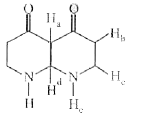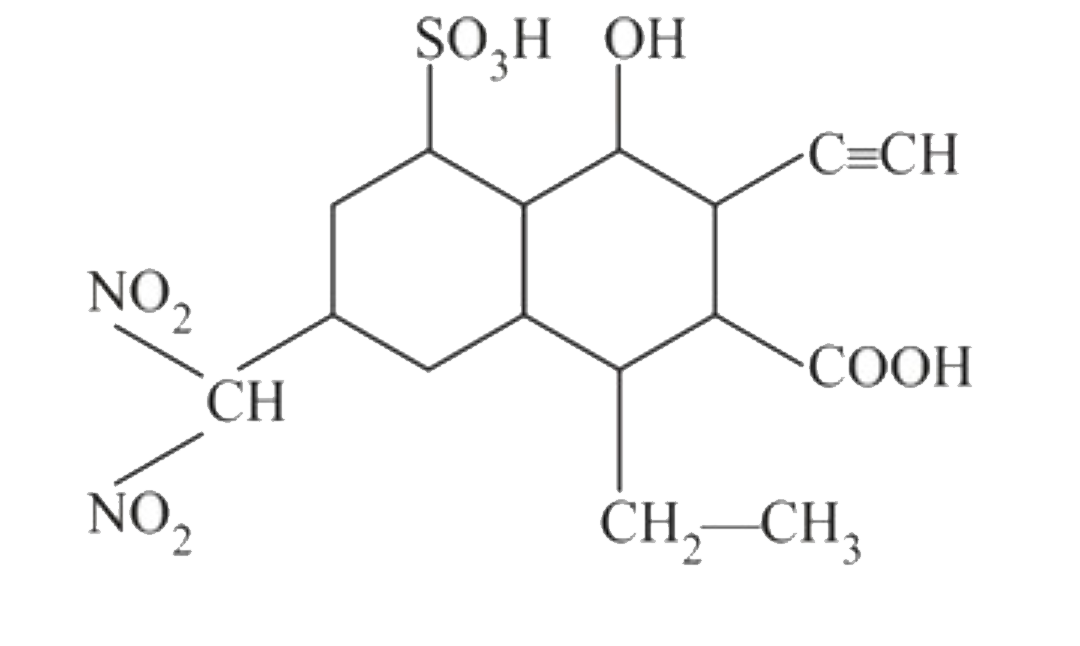Most acidic hydrogen is present in
CH3−O∣∣C−CH2−O∣∣C−O−CH3
CH3−O−O∣∣C−CH2−O∣∣C−O−CH3
CH3−O∣∣C−CH2−O∣∣C−CH3
CH3−O∣∣C−CH2−CH3
The correct Answer is:C
To determine which compound contains the most acidic hydrogen, we need to analyze the stability of the conjugate base formed when the hydrogen is removed. Here's a step-by-step solution:
Step 1: Identify the Compounds
We need to look at the given options (A, B, C, D) and identify the structures of the compounds. This will help us understand where the acidic hydrogens are located.
Step 2: Determine the Acidic Hydrogen
An acidic hydrogen is typically one that can be removed to form a stable conjugate base. The stability of the conjugate base is often enhanced by resonance or inductive effects.
Step 3: Analyze Each Option
- Option A: Look for the hydrogen that can be removed and check if the resulting negative charge can be stabilized by resonance or inductive effects.
- Option B: Similar to A, check for the hydrogen and analyze the stability of the conjugate base.
- Option C: Again, identify the acidic hydrogen and assess the stability of the conjugate base.
- Option D: Follow the same process as above.
Step 4: Compare Stability of Conjugate Bases
For each option, compare the stability of the conjugate bases formed. The more stable the conjugate base, the more acidic the original hydrogen is. Look for:
- Resonance structures that can delocalize the negative charge.
- Inductive effects from electronegative atoms or groups that can stabilize the negative charge.
Step 5: Conclusion
After analyzing all options, determine which compound has the most stable conjugate base. This compound will have the most acidic hydrogen.
Final Answer
The compound with the most acidic hydrogen is the one that forms the most stable conjugate base, which is determined through the analysis above.
We need to look at the given options (A, B, C, D) and identify the structures of the compounds. This will help us understand where the acidic hydrogens are located.
An acidic hydrogen is typically one that can be removed to form a stable conjugate base. The stability of the conjugate base is often enhanced by resonance or inductive effects.
- Option A: Look for the hydrogen that can be removed and check if the resulting negative charge can be stabilized by resonance or inductive effects.
- Option B: Similar to A, check for the hydrogen and analyze the stability of the conjugate base.
- Option C: Again, identify the acidic hydrogen and assess the stability of the conjugate base.
- Option D: Follow the same process as above.
For each option, compare the stability of the conjugate bases formed. The more stable the conjugate base, the more acidic the original hydrogen is. Look for:
- Resonance structures that can delocalize the negative charge.
- Inductive effects from electronegative atoms or groups that can stabilize the negative charge.
After analyzing all options, determine which compound has the most stable conjugate base. This compound will have the most acidic hydrogen.
The compound with the most acidic hydrogen is the one that forms the most stable conjugate base, which is determined through the analysis above.
Similar Questions
Knowledge Check
- Question 1 - Select One

Identify most acidic hydrogen present in the above compound :AaBbCcDd - Question 2 - Select One
The acidic hydrogen is present in -
AEthyneBEtheneCBenzeneDEthane - Question 3 - Select One

Identify most acidicn hydrogen present in the above compound :AaBbCcDd


